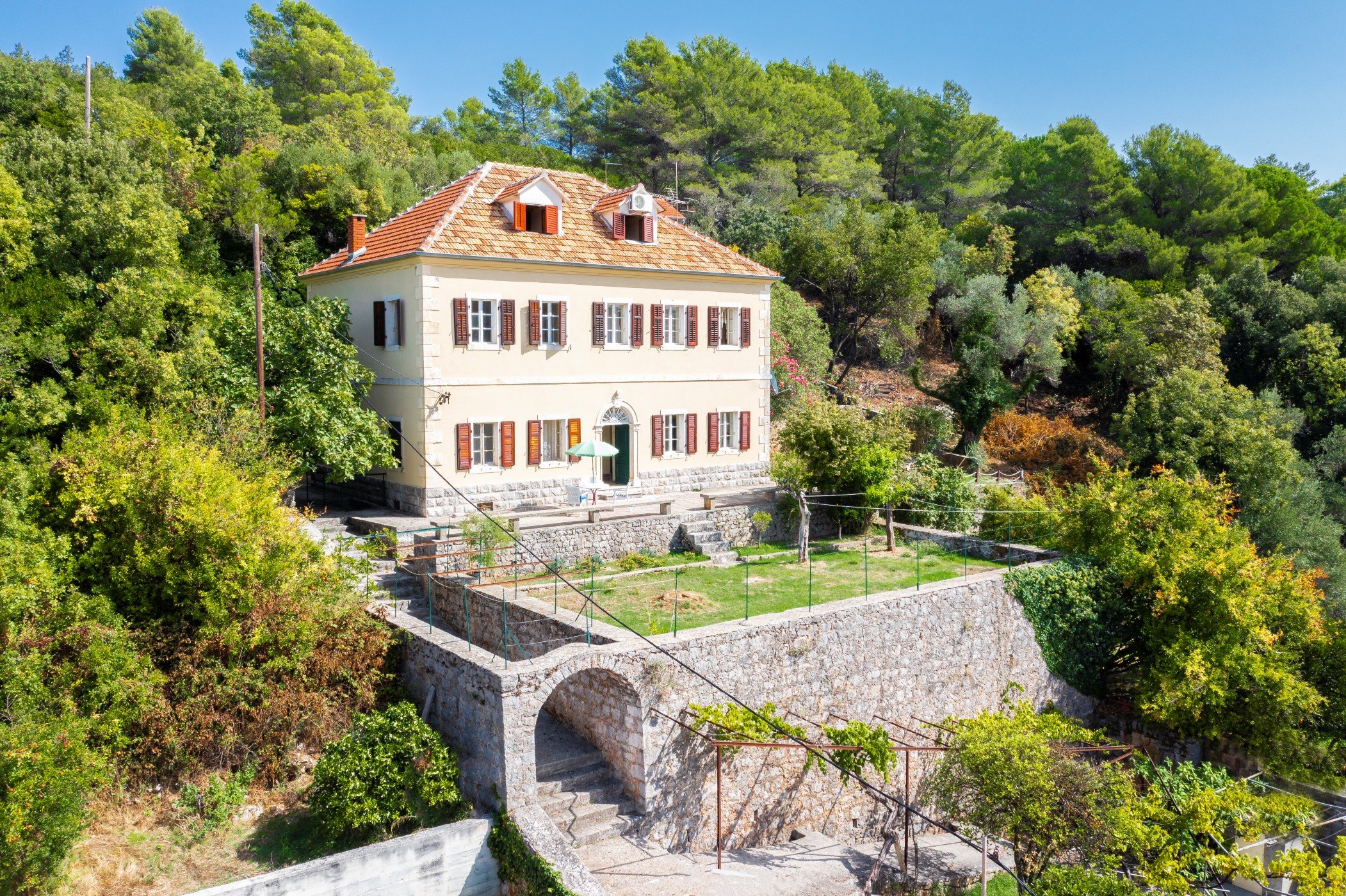Mountainside Compound in Montenegro With Three Houses and Sea Views
Perched 300 metres (984 feet) above the Adriatic in the protected hamlet of Gornja Lastva, this restored 19th-century estate looks across olive groves and forested slopes to the Bay of Kotor, one of Europe’s most dramatic natural harbors.
From its terraces, the panorama sweeps over the yachts of Porto Montenegro and the old port town of Tivat, with the open sea beyond.
Location in a hilltop village in Montenegro
Gornja Lastva is a small, centuries-old settlement on the Vrmac ridge, a spur that separates the Bay of Tivat from the inner fjord of Kotor. Known for its pink-toned local limestone, dry-stone walls and Mediterranean gardens, the village retains a timeless character; conservation rules protect its original street pattern and architecture. A 15th-century Catholic church still hosts summer concerts and festivals, and quiet stone lanes wind between restored farmhouses and unspoiled ruins.
Despite the sense of seclusion, the coast is just minutes away: Porto Montenegro’s superyacht marina and dining scene lie 4 kilometres (2.5 miles) downhill, while Tivat International Airport is a 15-minute drive — about 13 kilometres (8 miles). Kotor’s UNESCO-listed old town is roughly 20 minutes by car (12 miles), and the beaches of the Luštica Peninsula are within half an hour.
Montenegro’s quiet luxury appeal
Montenegro has emerged as a high-end Adriatic escape: a blend of Venetian heritage towns, dramatic mountains, and a coastline dotted with boutique resorts and private moorings. Porto Montenegro pioneered the modern yachting scene here, followed by developments such as Lustica Bay and One&Only Portonovi. Yet hill villages like Gornja Lastva remain largely untouched, offering privacy with proximity to the sea — a combination increasingly sought by design-minded buyers.
From ruin to refined compound
Interior designer Tanja Pustinja Nikolić first spotted the crumbling 19th-century house while staying at Porto Montenegro and exploring the forested slopes of Vrmac on an ATV tour. What began as that single ruin has since evolved into a three-house private estate — a main villa, guesthouse, and staff cottage — each retaining the authentic pink stone façades while introducing contemporary comforts such as underfloor heating, independent heat pumps, and smart skylights.
Main villa — 177 square metres (1,905 square feet)
Designer living room with fireplace, dining room, kitchen, two bedrooms, one full bath, and a guest powder room.
Guesthouse — 54 square metres (581 square feet)
Living and dining area, kitchen, one bedroom, full bath, and powder room.
Second guest/staff house — 62 square metres (667 square feet)
Configured with one bedroom, living area, kitchen, and bath; adaptable for guests or support staff.
Altogether the compound offers four bedrooms and six bathrooms across 293 square metres (3,154 square feet) of interiors.
Outdoor spaces center on a sea-view pool, summer kitchen with grill and pizza oven, shaded dining terrace, and landscaped gardens stepping down toward the bay.
For buyers seeking quiet Mediterranean charm within easy reach of the Adriatic’s new luxury hubs, this estate offers both heritage and modern comfort.
All photos courtesy of the listing agency.
























































































